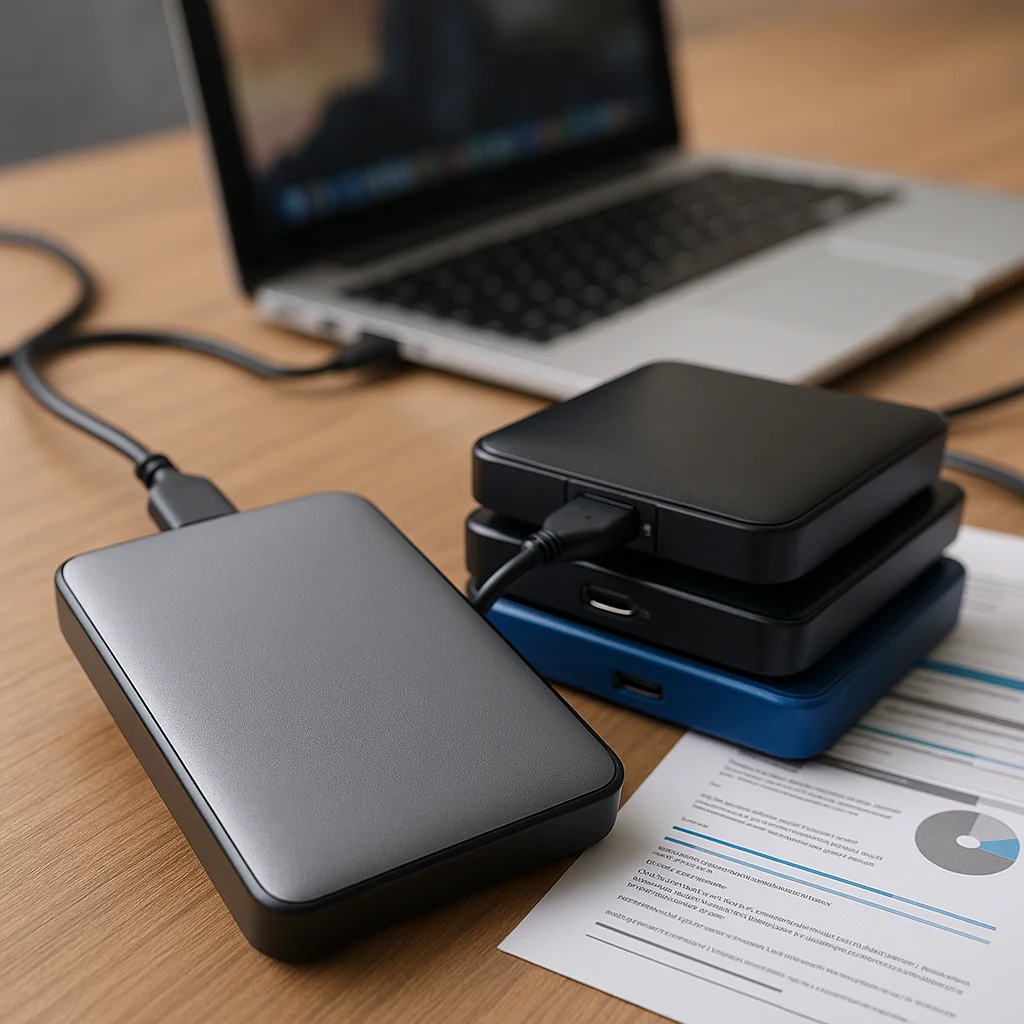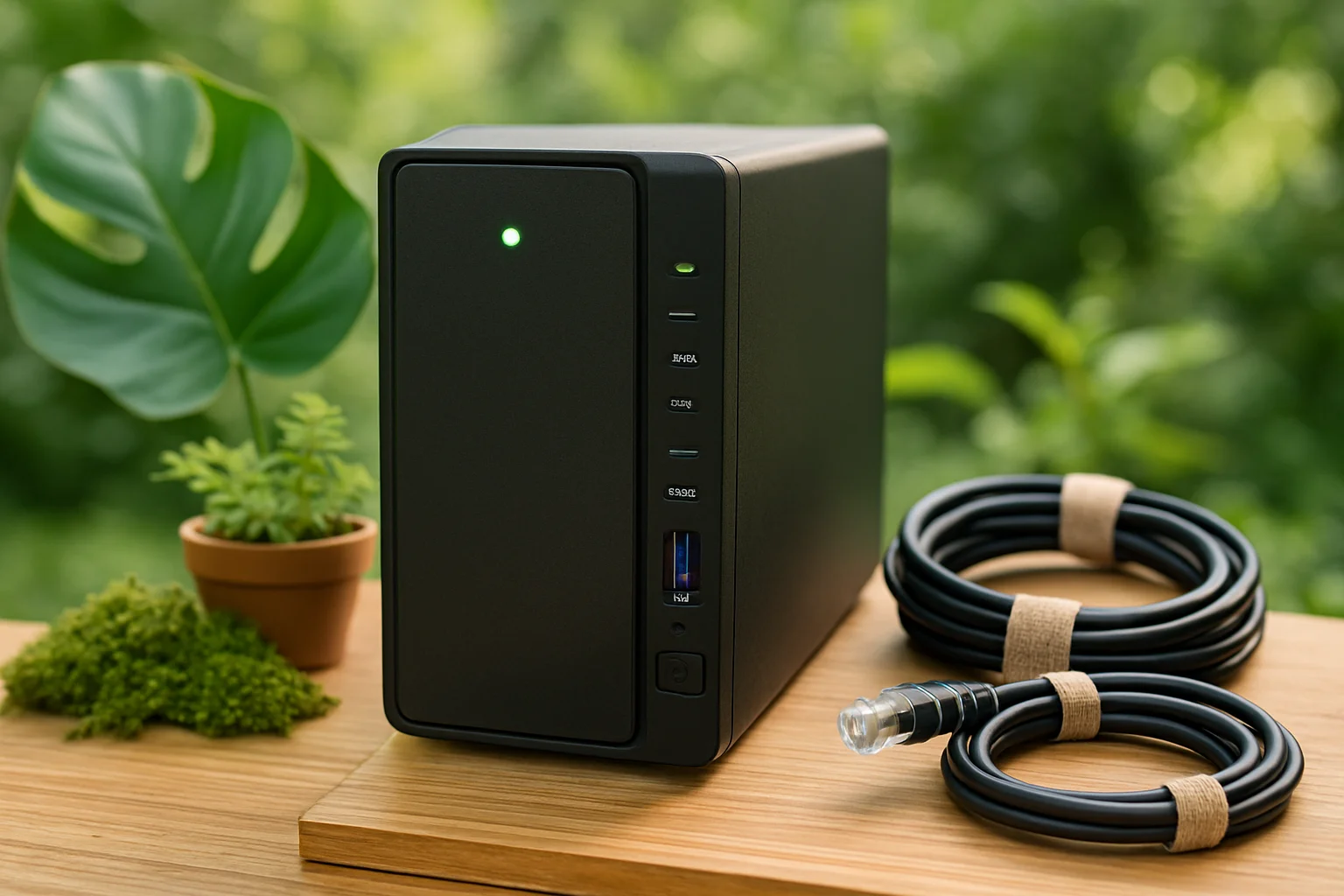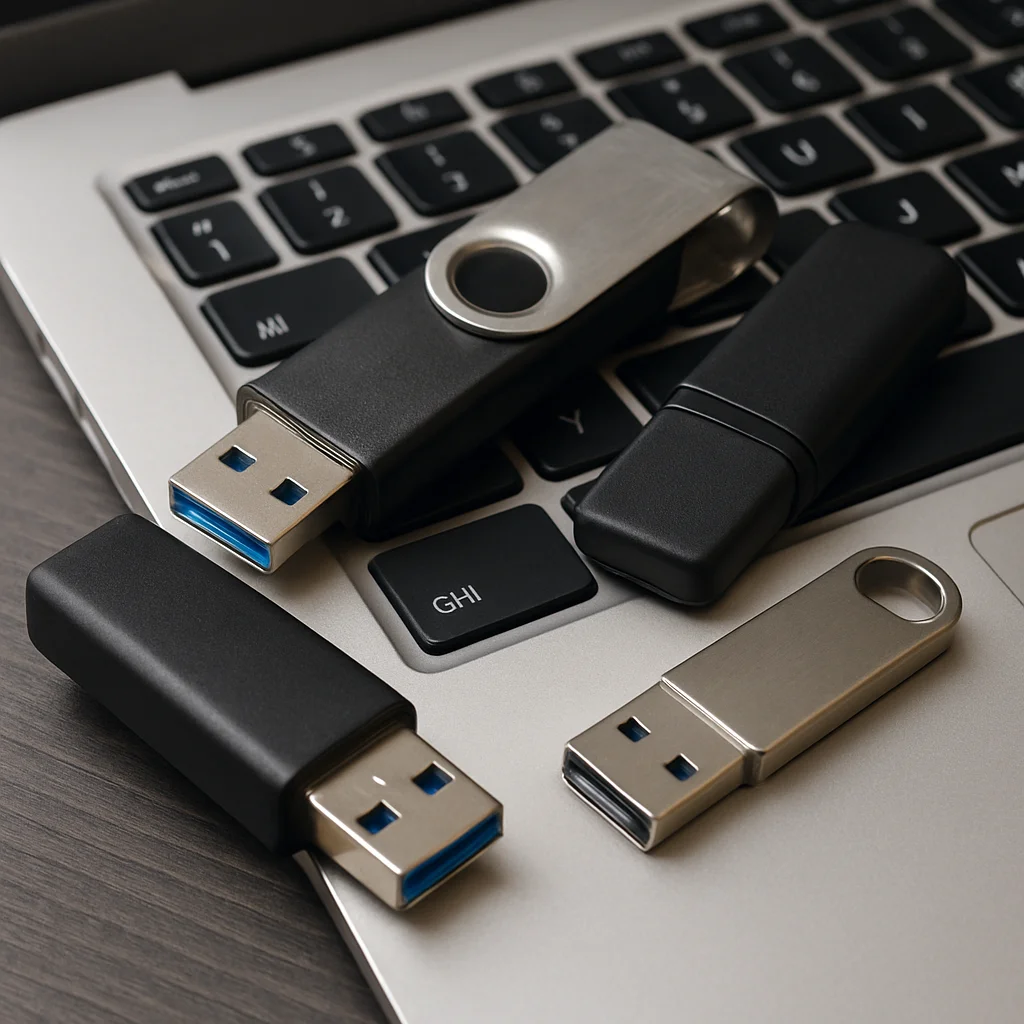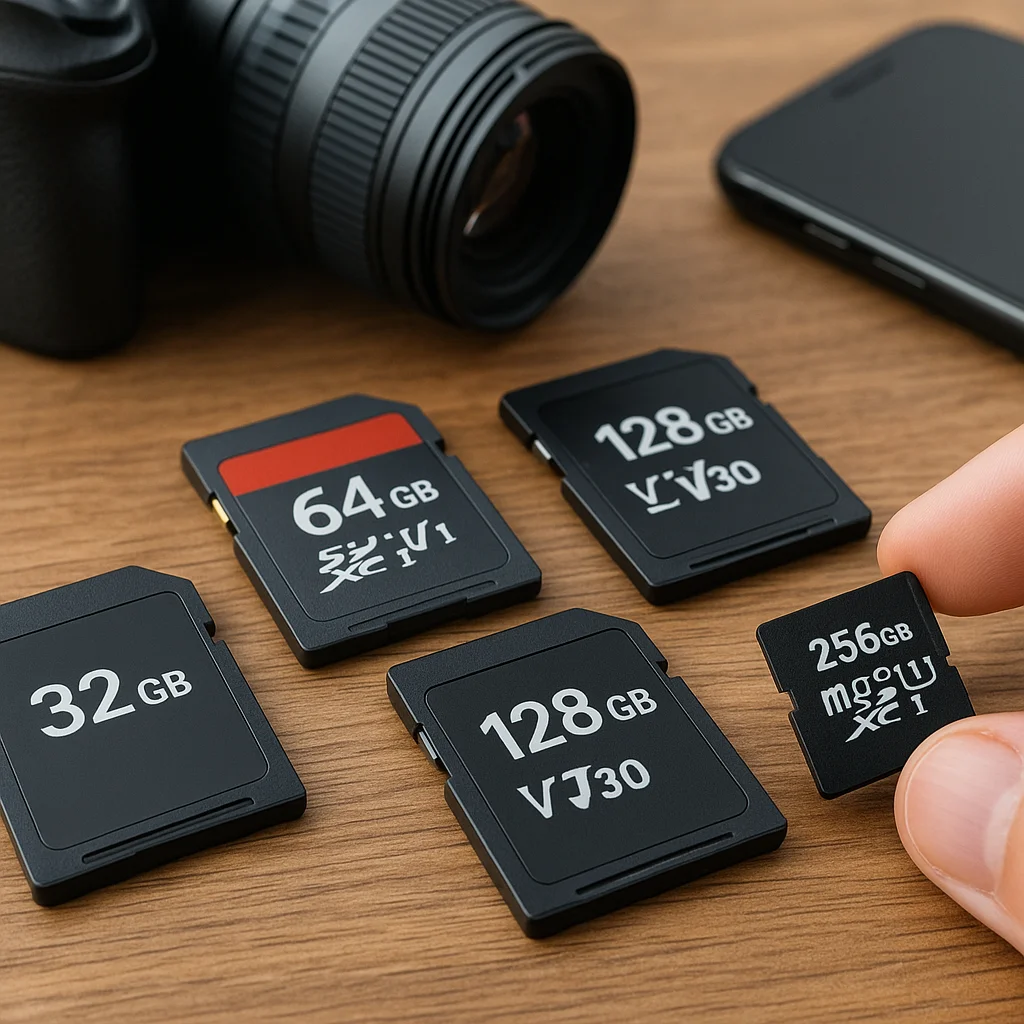Types of External Hard Drives
When shopping for an external hard drive, you’ll mainly come across two technologies: HDDs (Hard Disk Drives) and SSDs (Solid State Drives). Each type has distinct advantages depending on your usage, budget, and performance expectations.
Hard Disk Drives (HDDs)
HDDs use spinning magnetic platters to store data, a technology that's been around for decades. They are widely available, especially in higher capacities.
- Storage Capacity: Ranges from 500GB up to 20TB or more, making them ideal for large media libraries or long-term backups.
- Price: HDDs offer the lowest cost per gigabyte, making them the most budget-friendly option for bulk storage.
- Speed: Typically slower than SSDs, with average read/write speeds around 100–150 MB/s.
- Durability: More vulnerable to physical shock or drops due to mechanical parts.
- Noise: Can produce slight humming or clicking sounds when in use.
HDDs are best suited for users who prioritize storage size over speed, such as photographers archiving raw files, or anyone needing cost-effective backup solutions.
Solid State Drives (SSDs)
SSDs use flash memory to store data, meaning there are no moving parts. This gives them a significant edge in performance and durability.
- Speed: Much faster than HDDs. Typical external SSDs reach 400–1,000 MB/s, and Thunderbolt models can go beyond 2,000 MB/s.
- Durability: Excellent resistance to drops, vibrations, and shocks, making them ideal for travel or field work.
- Size: More compact and lightweight than traditional HDDs.
- Noise: Completely silent due to the absence of mechanical components.
- Price: Generally more expensive, especially at higher capacities (e.g., 2TB+).
SSDs are perfect for professionals working with high-resolution video, frequent file transfers, or real-time editing directly from the drive.
Hybrid Drives and Niche Options
While less common, there are a few other options worth mentioning:
- Hybrid Drives (SSHDs): Combine a traditional HDD with a small SSD cache to improve speed for frequently accessed data. These are rare in external formats but may be found in specialty enclosures.
- RAID Enclosures: Some external drives use RAID (Redundant Array of Independent Disks) configurations, combining multiple drives for performance (RAID 0), redundancy (RAID 1), or both. These are typically used by creatives and enterprise users.
- Wireless Drives: Include a battery and Wi-Fi capability, allowing file access without a direct connection. Handy for mobile device backups or travel.
Understanding the different types of external hard drives helps you match your storage solution to your exact needs — whether that’s raw speed, large capacity, or a reliable mobile archive.
Speed & Performance
When choosing an external hard drive, transfer speed is a crucial factor, especially if you handle large files or work directly from the drive. Several elements affect overall performance — not just the drive's internal speed, but also the connection interface, file system, and even the host device's capabilities.
Drive Technology
The type of storage — whether it’s a traditional HDD or a modern SSD — directly influences speed. However, this is just one part of the equation. Even a fast SSD can be bottlenecked by a slow connection.
Connection Interfaces
The interface between your external drive and computer is often the biggest speed limiter. Below are the most common types:
- USB 2.0: Outdated, with max speeds around 35 MB/s. Not recommended unless for legacy use.
- USB 3.0 / USB 3.1 Gen 1: Much faster, supporting up to 5 Gbps (around 500 MB/s in real-world use).
- USB 3.2 Gen 2: Doubles the speed to 10 Gbps, suitable for high-speed SSDs.
- USB-C: Refers to the connector shape — it supports multiple standards (e.g. USB 3.2, Thunderbolt) but is not inherently fast unless paired with the right protocol.
- Thunderbolt 3 / 4: Among the fastest interfaces, with speeds up to 40 Gbps. Ideal for ultra-fast SSDs and demanding workflows like 8K video editing.
Always check both the drive’s interface and your computer’s port capabilities to avoid mismatches and bottlenecks.
Read vs Write Speeds
External drives typically list two speed ratings:
- Read speed: How quickly data can be retrieved from the drive.
- Write speed: How fast data can be saved onto the drive.
SSDs usually have more balanced read/write speeds, while some HDDs may have slower write speeds depending on their cache size and platter speed.
Spindle Speed and Cache (for HDDs)
If you're using an HDD, two internal specs influence performance:
- RPM (Revolutions Per Minute): Higher RPM (e.g. 7200 RPM) means faster data access compared to 5400 RPM drives.
- Cache Memory: A larger cache (e.g. 128MB or 256MB) allows the drive to temporarily store frequently accessed data, speeding up operations.
File System Format
The drive's file system also affects performance and compatibility:
- NTFS: Optimized for Windows, supports large files and fast transfers.
- exFAT: Compatible across Windows and macOS, supports large files but can be slightly slower in performance.
- APFS / HFS+: Native to macOS, better for Time Machine and optimized for SSDs on Apple devices.
Performance Tips
- Use a short, high-quality cable to ensure consistent data rates.
- Don’t run the drive through a slow USB hub, especially if it's not powered.
- Defragment (HDD) or optimize (SSD) the drive occasionally to maintain performance.
- Keep at least 10–20% of free space to avoid slowdowns during read/write operations.
By understanding these factors and matching the right technology to your needs, you can avoid unnecessary lags and ensure your drive delivers optimal performance for years to come.
Security & Data Protection
External hard drives often contain sensitive or irreplaceable data — personal photos, client files, financial records, or proprietary work. Ensuring that this information is protected from theft, loss, or damage is essential. Fortunately, there are multiple layers of protection available, from physical safeguards to software-based encryption.
Hardware Encryption
Some external drives come with built-in hardware encryption, which encrypts data on the fly using a dedicated chip inside the device. This method is generally more secure and faster than software-based encryption, as it doesn’t rely on your computer’s processing power.
- AES-256 encryption: The industry standard for high-security storage, used by governments and enterprises worldwide.
- Integrated keypads: Some drives feature a physical keypad requiring a PIN before unlocking the data, adding an extra layer of protection.
- Self-destruct features: In rare high-security models, multiple incorrect PIN entries can trigger automatic data wipe.
Hardware-encrypted drives are especially useful for professionals handling confidential information or users traveling with sensitive files.
Software Encryption
If your drive doesn't have built-in encryption, you can use software solutions to protect your data. These tools can encrypt the entire drive or just specific folders or files.
- BitLocker (Windows): A built-in tool available on Pro and Enterprise editions that offers full-drive encryption.
- FileVault (macOS): Encrypts your external or internal drives with XTS-AES-128 encryption, integrated into macOS.
- VeraCrypt: A popular open-source tool for creating encrypted volumes or fully encrypted drives, cross-platform compatible.
While software encryption can be highly effective, it may slightly impact performance, and losing the decryption key or password can make your data permanently inaccessible.
Password Protection
Some drives or bundled software offer password protection features, which restrict access to the drive’s contents unless a password is entered. Note that this is not the same as full encryption — without encryption, the data may still be recoverable by skilled users or with recovery tools.
Automatic Backup and Sync
One of the easiest ways to protect data is by ensuring it’s regularly backed up. Many external drives include or support backup software that automates this process:
- Incremental backups: Only the files that have changed are copied, saving time and space.
- Scheduled backups: Set automatic backups daily, weekly, or when the drive is connected.
- Cloud sync options: Some drives support syncing with cloud services like Google Drive, Dropbox, or OneDrive as an additional safety net.
Using external drives as part of a multi-layered backup strategy — like the 3-2-1 method (3 copies, 2 types of media, 1 offsite) — greatly reduces the risk of data loss.
Physical Security
Beyond digital measures, physical protection is often overlooked. Consider the following precautions:
- Shock resistance: Choose rugged or military-grade enclosures if the drive will be moved frequently or used in rough environments.
- Anti-theft features: Some enclosures offer Kensington lock slots or biometric access controls.
- Secure storage: When not in use, keep drives in locked drawers or safes, especially in shared or public environments.
Malware & Ransomware Protection
External drives are not immune to malware or ransomware attacks, especially if used on multiple machines. Best practices include:
- Use antivirus software: Scan your external drive regularly for malicious files.
- Disable autorun: Prevent the drive from launching software automatically when connected to a system.
- Keep your OS and backup software up to date: Many attacks exploit known vulnerabilities.
Proactively managing both the digital and physical security of your external drive ensures your data remains safe — whether it's personal, professional, or both.
Portability & Durability
Whether you're a frequent traveler, a field photographer, or simply someone who needs to move data between multiple locations, the portability and durability of your external hard drive are critical factors to consider. A compact, rugged drive can make the difference between data security and accidental loss or failure.
Form Factor and Weight
The size and weight of an external hard drive determine how easily it can be carried around:
- Portable drives: Typically 2.5-inch formats, these drives are lightweight (often under 250g) and powered directly via USB, making them ideal for travel.
- Desktop drives: Generally 3.5-inch units, bulkier and often requiring external power. They are better suited for stationary use at home or in the office.
- Ultra-portable SSDs: Some modern SSDs are smaller than a smartphone, with weights under 100g, fitting easily in a pocket or bag without hassle.
If your workflow involves moving around frequently, always opt for a 2.5-inch or smaller SSD form factor. These drives offer the best balance between portability and performance.
Build Quality and Materials
The physical casing of a drive significantly affects its resistance to external damage. Manufacturers now offer models built with stronger materials and reinforced designs:
- Metal enclosures: Provide better heat dissipation and resistance to crushing or bending.
- Rubberized or silicone exteriors: Help absorb shocks from accidental drops or bumps.
- Plastic casings: Lighter and often cheaper, but generally less protective unless internally reinforced.
Consider not only the look of the casing but also how it functions in your environment — e.g., a drive used outdoors or in mobile setups should be robust and grippy to avoid slips.
Shock, Drop, and Impact Resistance
Durability isn’t just about materials — it's about how well the drive can survive real-world accidents. Manufacturers often test and certify drives for:
- Drop resistance: Many rugged drives are rated to survive drops from up to 1.2 to 2 meters onto hard surfaces.
- Shock resistance: Internal shock mounts or floating components protect the drive mechanism or memory chips.
- Vibration resistance: Particularly important for drives used in vehicles or industrial settings.
Some SSDs even meet military-grade MIL-STD-810G standards for durability — a strong selling point if the drive is used in harsh environments.
Water and Dust Protection
Exposure to the elements can be a serious risk when carrying drives outdoors or in unpredictable environments. Look for IP (Ingress Protection) ratings:
- IP54: Offers protection against limited dust and water splashes.
- IP67: Fully dust-tight and can survive immersion in water up to 1 meter deep for 30 minutes.
Rugged drives with high IP ratings are especially popular among content creators working in outdoor locations (e.g., drones, cameras, laptops in the field).
Heat and Cold Tolerance
Extreme temperatures can affect the reliability of external drives. While SSDs tend to perform better than HDDs in this area, it's important to verify operating temperature ranges, typically:
- HDDs: Operate reliably between 5°C to 50°C; avoid using them in cold or hot environments without protection.
- SSDs: Often rated for -20°C to 70°C, making them more resilient for outdoor or industrial use.
Make sure to store and transport your drives in protective cases if you're exposing them to extreme conditions.
Cable Management and Integrated Design
For users on the go, even small design features can enhance portability:
- Integrated cables: Some ultra-portable drives include built-in retractable cables, reducing clutter and risk of forgetting the cable.
- Cable storage slots: Help keep the cable secured to the drive body during transport.
- Multi-interface support: Drives with both USB-A and USB-C options reduce the need for adapters across devices.
Efficient design choices like these can save space in your bag and reduce setup time during mobile work sessions.
Accessories for Extra Protection
If your drive doesn't include rugged features out of the box, you can still enhance its durability:
- Shockproof cases: Padded or hard-shell cases absorb impacts during transport.
- Silicone sleeves: Add grip and basic protection against scratches and bumps.
- Waterproof pouches: Useful for backpack storage in rainy conditions or near water.
Even a basic protective case can dramatically extend the life of your external drive when used in portable setups.






